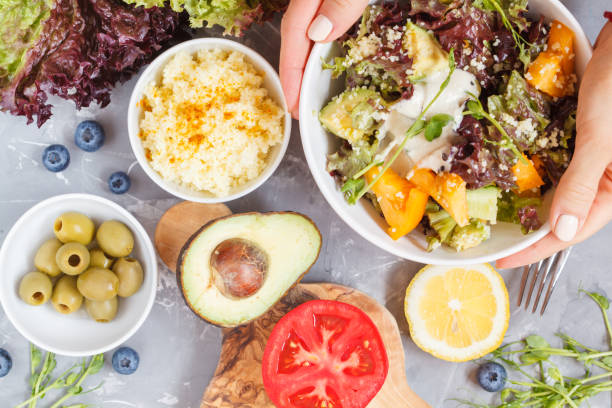
Learn about beauty and skincare with our expert guide.
Snacks for weight loss are a good appetizer. When hunger strikes between meals, reaching for the right bite can make or break your health journey. The key isn’t avoiding snacks altogether—it’s choosing nutrient-dense options that fuel your body while supporting your wellness objectives. Understanding which foods provide lasting satisfaction without derailing your progress is essential for long-term success—best research on Snacks.
Smart snacking revolves around three fundamental nutritional pillars: protein, fiber, and healthy fats. These macronutrients work synergistically to promote satiety, stabilize blood sugar levels, and prevent the energy crashes that often lead to poor food choices later in the day.
Protein serves as the foundation of effective it by increasing thermogenesis—the energy your body burns to digest food. High-protein options require more calories than carbohydrates or fats, creating a metabolic advantage. Additionally, protein helps preserve lean muscle mass during weight management, ensuring your body burns fat rather than valuable muscle tissue.
Fiber adds bulk to your snacks without contributing significant calories, creating a sense of fullness that lasts. Soluble fiber forms a gel-like substance in your digestive system, slowing nutrient absorption and providing sustained energy release. This prevents the rapid spikes and crashes associated with refined carbohydrates.
Mixed nuts represent one of nature’s most convenient portable snacks. A one-ounce serving provides approximately 6 grams of protein along with heart-healthy fats and fiber. The combination of almonds, walnuts, and pistachios offers diverse nutrients, including vitamin E, magnesium, and omega-3 fatty acids. Choose unsalted varieties to avoid excess sodium.
Greek yogurt stands out among it due to its impressive protein content, often double that of regular yogurt. The probiotics in Greek yogurt support digestive health, while the protein helps maintain stable blood sugar levels. Pair with fresh berries for added antioxidants and fiber without excessive sugar. Honey is also good with snacks. Must read it.
Hard-boiled eggs provide complete protein, containing all the essential amino acids your body needs. Each egg delivers about 6 grams of protein and healthy fats while remaining naturally low in carbohydrates. Prepare several at once for convenient grab-and-go options throughout the week.
Cottage cheese offers exceptional protein density with approximately 14 grams per half-cup serving. Choose low-fat varieties to maximize protein while minimizing calories. The casein protein in cottage cheese digests slowly, providing sustained amino acid release that’s particularly beneficial for evening snacking.
Apple slices with almond butter create an ideal balance of natural sweetness, fiber, and healthy fats. The pectin fiber in apples promotes feelings of fullness, while almond butter provides protein and monounsaturated fats. This combination stabilizes blood sugar and prevents energy crashes.
Hummus with vegetable sticks transforms raw vegetables into a satisfying with it. Bell peppers, carrots, cucumber, and celery provide essential vitamins and minerals while contributing minimal calories. The chickpeas in hummus offer plant-based protein and fiber, creating a nutritionally complete snack.
Berries rank among the most nutrient-dense fruits available. Blueberries, strawberries, and raspberries provide powerful antioxidants called anthocyanins, which may support metabolism and reduce inflammation. Their high fiber content and natural sweetness satisfy cravings while keeping calorie counts low.
Avocado delivers heart-healthy monounsaturated fats and fiber in a creamy, satisfying package. Half an avocado provides about 10 grams of fiber and helps increase absorption of fat-soluble vitamins from other foods. Sprinkle with lime juice and sea salt for enhanced flavor.
Chia seed pudding transforms tiny seeds into a gel-like dessert that’s perfect for snacks for weight loss. Mix chia seeds with unsweetened almond milk and let sit overnight. The seeds expand and create a pudding-like texture while providing omega-3 fatty acids, protein, and fiber.
Edamame offers complete plant-based protein in a convenient, pre-portioned format. One cup of shelled edamame provides 17 grams of protein and 8 grams of fiber. The act of shelling edamame also slows consumption, promoting mindful eating habits.
Dark chocolate with nuts satisfies sweet cravings while providing beneficial compounds. Choose chocolate with at least 70% cacao content to maximize antioxidants while minimizing added sugars. Pair with a small handful of almonds or walnuts for protein and healthy fats.
Celery with nut butter creates a classic combination that’s both satisfying and low in calories. The water content and fiber in celery provide volume, while nut butter adds protein and healthy fats. This pairing exemplifies effective snacks for weight loss by combining low-calorie bulk with nutrient density.
The timing of your snacking can significantly impact its effectiveness for weight management. Consuming snacks for weight loss between meals helps maintain steady blood sugar levels and prevents overeating at main meals. Aim to snack 2-3 hours after meals and 1-2 hours before your next meal for optimal results.
Portion control remains crucial even with healthy options. Pre-portion snacks into appropriate serving sizes to avoid mindless overconsumption. Use small containers or bags to create grab-and-go portions that align with your nutritional goals.
Late-night cravings often derail weight management efforts, making strategic evening snacks for weight loss essential. Choose options that won’t interfere with sleep quality while providing satisfaction. Cottage cheese with a small amount of fruit offers slow-digesting protein that supports overnight muscle recovery.
Herbal teas can satisfy the desire for flavor without adding calories. Chamomile, peppermint, or ginger teas provide warmth and comfort while supporting digestion and relaxation.
Success with healthy snacking often depends on preparation. Dedicate time each week to washing and chopping vegetables, portioning nuts and seeds, and preparing protein-rich options like hard-boiled eggs or Greek yogurt parfaits.
Keep a variety of snacks for weight loss readily available in your refrigerator, pantry, and workplace. This accessibility prevents reliance on less nutritious convenience options when hunger strikes unexpectedly.
Keto-friendly options focus on high-fat, moderate-protein choices with minimal carbohydrates. Macadamia nuts, cheese crisps, and avocado-based snacks align with ketogenic principles while supporting satiety.
Plant-based alternatives emphasize nuts, seeds, legumes, and vegetables to provide protein without animal products. Roasted chickpeas, hemp seeds, and nutritional yeast create satisfying vegan snacks for weight loss.
Low-sodium varieties benefit those managing blood pressure or reducing bloating. Choose unsalted nuts, fresh vegetables, and homemade preparations over processed options that often contain excessive sodium.
The most effective snacks for weight loss are those you’ll consistently choose over less nutritious alternatives. Experiment with different combinations to find options that satisfy your taste preferences while supporting your health goals with snacks for weight loss.
Focus on whole foods that require minimal processing and provide multiple nutrients per serving. This approach ensures your snacking habits contribute positively to your overall nutritional intake rather than simply filling gaps between meals.
Remember that successful weight management involves creating a lifestyle you can maintain long-term. Choose snacks for weight loss that you genuinely enjoy and that fit seamlessly into your daily routine. This sustainability factor often determines the difference between short-term success and lasting transformation.
By incorporating these evidence-based strategies and nutrient-dense options into your daily routine, you’ll develop a healthy relationship with snacking that supports your weight management goals while providing the energy and satisfaction your body needs throughout the day.
What is the healthiest snack to lose weight?
The healthiest snack combines protein, fiber, and healthy fats to maximize satiety. Greek yogurt with berries or a small handful of mixed nuts with an apple are excellent choices. These combinations provide sustained energy, prevent blood sugar spikes, and keep you satisfied between meals.
What is the 30 30 30 rule for weight loss?
The 30-30-30 rule involves eating 30 grams of protein within 30 minutes of waking up, followed by 30 minutes of low-intensity exercise. This approach helps kickstart metabolism, preserve muscle mass, and establish consistent daily habits that support long-term weight management.
What is the number 1 best food for weight loss?
While no single food guarantees weight loss, eggs consistently rank as a top choice due to their complete protein profile, versatility, and ability to promote satiety. They’re nutrient-dense, relatively low in calories, and can be prepared in numerous ways to prevent dietary boredom.
Can I still lose weight if I eat snacks?
Absolutely! Strategic snacking can actually support weight loss by preventing overeating at meals, maintaining steady blood sugar levels, and boosting metabolism through frequent, small meals. The key is choosing nutrient-dense options and practicing portion control.
How to lose belly fat?
Belly fat reduction requires a combination of caloric deficit through diet, regular exercise including both cardio and strength training, adequate sleep, and stress management. Spot reduction isn’t possible, so focus on overall body fat reduction through sustainable lifestyle changes.
What are 0 calorie foods?
While truly zero-calorie foods don’t exist, some foods require more energy to digest than they provide. These include celery, cucumber, leafy greens, and ice water. However, these foods should complement, not replace, a balanced diet with adequate nutrition.
How can I slim my stomach in 7 days?
In seven days, you can reduce bloating and water retention by eliminating processed foods, increasing water intake, reducing sodium, eating more fiber gradually, and incorporating light exercise. However, significant fat loss requires longer-term commitment to healthy habits.
How to lose 2kg in a week?
Safe weight loss typically ranges from 0.5-1kg per week. To lose 2kg weekly requires an extreme caloric deficit that’s often unsustainable and potentially unhealthy. Focus on gradual changes like reducing portion sizes, increasing activity, and choosing whole foods over processed options.
What drinks burn belly fat?
No drinks specifically target belly fat, but certain beverages support overall weight management. Green tea contains catechins that may boost metabolism, while water helps with satiety and proper hydration. Protein shakes can also support muscle maintenance during weight loss.
How to lose weight fastly?
Sustainable weight loss focuses on creating a moderate caloric deficit through balanced nutrition and regular exercise. Quick fixes often lead to muscle loss and metabolic slowdown. Aim for 1-2 pounds per week through consistent healthy habits rather than extreme measures.
What is the no. 1 weight loss drink?
Water ranks as the top weight loss beverage. It has zero calories, helps with satiety when consumed before meals, supports metabolism, and often reduces overall caloric intake when it replaces high-calorie beverages like sodas or fancy coffee drinks.
Does lemon water burn fat?
Lemon water doesn’t directly burn fat, but it can support weight loss efforts by promoting hydration, providing vitamin C, and potentially helping with digestion. The weight loss benefits come primarily from replacing higher-calorie beverages rather than any fat-burning properties of lemons.
How to burn fat without exercise?
While exercise accelerates fat loss, you can create a caloric deficit through dietary changes alone. Focus on portion control, choosing nutrient-dense foods, eating adequate protein, staying hydrated, getting quality sleep, and managing stress levels.
Is honey good for weight loss?
Honey contains beneficial compounds and may be slightly better than refined sugar, but it’s still high in calories and should be used sparingly during weight loss. A teaspoon occasionally can satisfy sweet cravings, but it’s not a weight loss food itself.
Does hot water burn belly fat?
Hot water doesn’t specifically burn belly fat, but staying well-hydrated with any temperature water supports metabolism and can help with appetite control. Some people find warm water more satisfying and it may aid digestion, but the temperature itself doesn’t create fat loss.
No comments yet. Be the first to comment!

Recent Comments